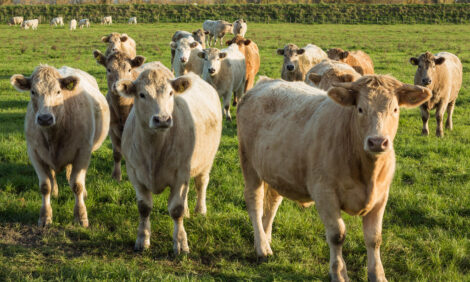



Falling Agricultural Output Forecast for Australia
AUSTRALIA - A decline of between four and five per cent in agricultural output is forecast in the latest outlook from ABARES, with reductions expected in both the crop and livestock sectors. El Nino and Australia's free trade agreement with South Korea are expected to have some impacts on production but the effects are unclear at this stage.The June issue of Agricultural Commodities contains ABARES latest outlook for Australia's key agricultural commodities in 2014-15, which updates the outlook ABARES released in March 2014.
In addition to commodity forecasts, this publication includes boxes on the impact of El Nino; the US farm bill; the proportion of agricultural production exported; and an overview of the Korea-Australia free trade agreement which is expected to come into effect in 2015.
Key Issues
Commodity forecasts and projections
The volume of farm production is forecast to decrease by 4.6 per cent in 2014-15, following an estimated increase of 6.0 per cent in 2013-14. The forecast decline reflects expected falls in both crop and livestock production.
The gross value of farm production is forecast to fall by 3.1 per cent in 2014-15 to about $51.8 billion, following an estimated increase of 10.1 per cent in 2013-14.
Assuming a return to average seasonal conditions in the first half of 2015, it is expected that broadacre livestock producers will begin to reduce slaughter and rebuild stock numbers by that time. The index of livestock production is forecast to fall by 2.5 per cent for 2014-15 as a whole.
Crop production, in aggregate, is forecast to decline by 6.2 per cent in 2014-15, following an estimated rise of 6.1 per cent in 2013-14.
Earnings from farm exports are forecast to fall by 6.2 per cent in 2014-15 to around $38.5 billion. At this forecast level, export earnings in 2014-15 would be around nine per cent above the average of $35.5 billion over the 10 year to 2012-13 in real terms.
Earnings from crop exports are forecast to fall by 9.6 per cent to $20.4 billion in 2014-15, following a decline of 2.1 per cent in the previous year.
Export earnings from livestock and livestock products are forecast to fall by 1.9 per cent to $18.1 billion in 2014-15, following an increase of 23.3 per cent in the previous year.
The index of unit returns for Australian farm exports is forecast to remain largely unchanged in 2014-15, following an estimated rise of 8.1 per cent in 2013-14. Higher export prices in 2014-15 for beef, wool and sheep meat are expected to be offset by lower prices for wheat, cotton, barley and sugar.
Agricultural commodities for which export earnings are expected to fall in 2014-15 include: barley (41 per cent); canola (23 per cent); beef and veal (4.0 per cent); rice (32 per cent); horticulture (13 per cent); and mutton (28 per cent). Export earnings are forecast to increase for sugar (5.0 per cent); live cattle (3.0 per cent) and live sheep (24 per cent).
Export earnings for fisheries products are forecast to increase by 4.6 per cent in 2014-15 to around $1.4 billion, following an estimated increase of 13.4 per cent in 2013-14. Export earnings in 2014-15 are forecast to rise by 50 per cent for salmonids, 15 per cent for tuna and 18 per cent for live, fresh and chilled abalone.
Impact of El Niño
The impact of an El Niño event on crop production is not uniform and is difficult to predict. While reduced rainfall is often, but not always, associated with El Niño, the timing of the rainfall also influences the effect on crop production.
US 2014 Farm Bill
The agricultural policies of the 2014 farm bill are projected to reduce spending on agricultural programmes by around 2 per cent (or US$2 billion) over the next five years, compared with the budget baseline that assumes continuation of 2008 farm bill policies. However, budget savings over the life of the 2014 farm bill may not be realised. Actual spending on agricultural programmes under the 2008 farm bill exceeded the original budget by around US$5 billion.
Proportion of agricultural production exported
ABARES estimates that the share of agricultural production exported between 2010-11 and 2012-13 averaged around 65 per cent. This was higher than the 60 per cent estimated for exports between 2006-07 and 2007-08 when seasonal conditions were less favourable.
Korea-Australia free trade agreement
Australian exporters and producers of beef, cheese, butter, malting barley and unroasted malt are expected to benefit most from the agreement, as these commodities are currently subject to relatively high import tariffs.
ABARES has conducted simulation analysis to estimate the potential effects on Australian exports of beef and cheese to the Republic of Korea following assumed implementation of KAFTA in 2015. Under KAFTA, the volume of Australian beef exports to the Republic of Korea in 2029, which is the year the agreed removal of tariffs on Australia.
TheCattleSite News Desk


